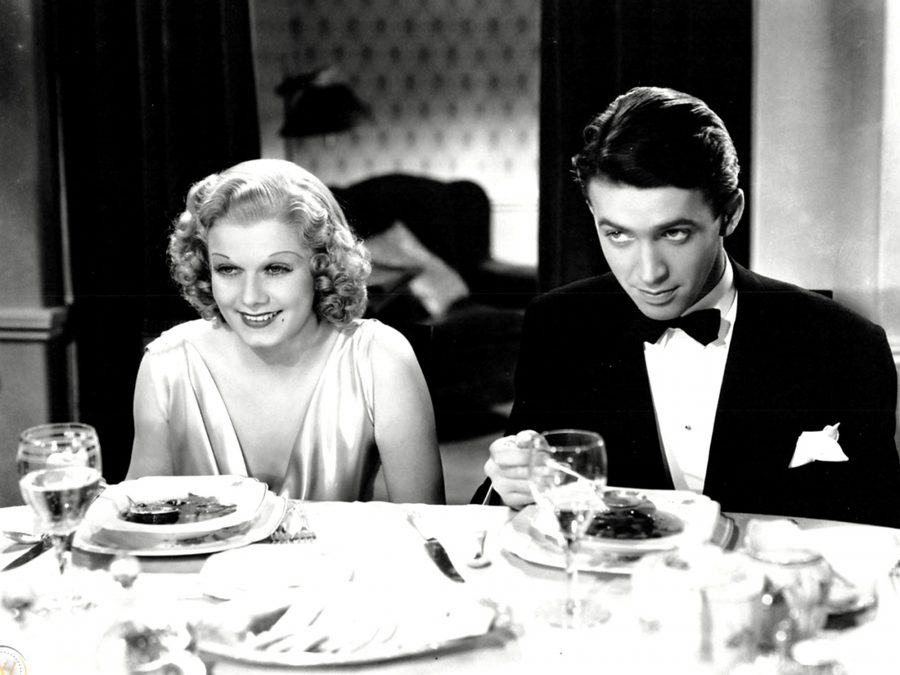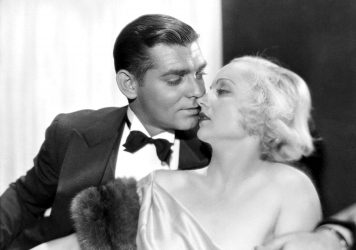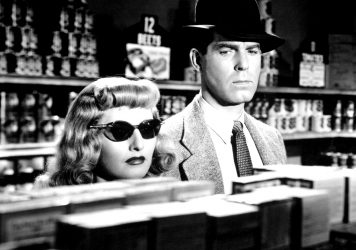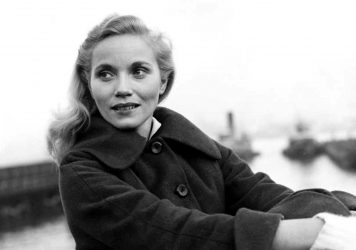
Jean Harlow’s mystique exists in the sweet spot between glamorous and salacious. Her legacy is that of the original Hollywood bombshell, arousing images of statement eyebrows framed by perfect curls and satin gowns cut perilously close to the navel. But it is also the kind where success is flanked by tragedy, cemented by her untimely death from kidney failure aged just 26.
On screen, Harlow was everything the studio system PR machine purported her to be: a beautiful blonde with a keen sense for bawdy comedy and an hourglass figure that delighted male moviegoers and the MGM costume department alike. However, across a career spanning nine short years, the women she played – with seldom exception – were simmering vamps, theatrically dim-witted and far removed from the real Harlow. Think of Red Dust’s infamous pre-Code bathing scene that ostensibly required Harlow to appear completely naked, or the steady stream of jokes pertaining only to her character’s vanity and lack of intellect in Dinner at Eight.
It was a public persona engineered by the first generation of Hollywood profiteers she came to loathe. So when Clarence Brown’s 1936 romantic comedy Wife vs Secretary appeared on her radar, Harlow campaigned for the role of Clark Gable’s amiable personal assistant Helen “Whitey” Wilson, shrewdly realising it was a chance to showcase her acting chops, rather than her curves and ability to crack wise.
Aside from Harlow’s refined performance, Wife vs Secretary is an average picture, mired by an overarching workplace storyline that is nowhere near as compelling as Gable gamely tries to make it. He plays Van Stanhope, a publishing magnate navigating both the magazine business and intimate relationships with sophisticated wife Linda (Myrna Loy) and the doting Whitey.
Based on the maddening assumption that an attractive woman will eventually weaponise her looks to ensnare a defenceless man of her choosing, Linda is convinced by her meddling mother-in-law that Whitey is hot for her husband. As Whitey’s boyfriend Dave (a baby-faced James Stewart) wisely notes during the film’s coda, “Don’t look for trouble where there isn’t any, because if you don’t find it, you’ll make it.”

When we first meet Whitey, she is atop a ladder hanging a framed caricature of Van in their shared office – the kind that you might have found lining the walls of old school celebrity haunts around Los Angeles at the time. She is luminous but dressed conservatively in a streamlined calf-length dress and low heels. Unaware that he has entered the room, she studies the picture and wonders aloud, “Maybe I’ve been with him too long, but he must be better looking than that?!” It is the first indicator of Van and Whitey’s dynamic – playful but lived-in – and Gable and Harlow’s easy chemistry elevates their arc. This was their fifth in a total of six collaborations and there is a palpable mutual affection between them.
Everything about her performance is controlled, buoyed by a sweet effervescence that is arguably more effective than the brassy quips and double entendres fans had come to expect from a Jean Harlow picture. Wife vs Secretary is not an outright screwball comedy, but the joyful way she plays those beats with Van are welcome moments of lightness. It is endearing to see a male/female relationship in a classic Hollywood movie based on mutual respect and friendship first, rather than sexual attraction. So too for a female character to be so career focused that she turns down a marriage proposal from her paramour due to the antiquated caveat that she must resign first.
Another layer that Harlow brings to Whitey is an awkwardness that manifests in her physicality. When she is called to Van and Linda’s high society party for work purposes, Whitey is visibly uncomfortable in the lavish environment; shoulders hunched, fiddling with her fur coat and fancy dress. She laughs off Van’s eye roll-inducing suggestion that she should wear this kind of attire to the office and ignores the unsolicited attention of male guests, disinterested in any gravitas afforded to good looks.
Whitey’s loyalty to Van only reads as attraction towards to end of the film, when the pair are thrown together on a business trip to Havana. There is a gorgeous moment where she sits alone in the hotel bar and tenderly observes a couple at the next table flirt and begin to slow dance. Harlow’s face says everything, conveying a longing to be romanced like this. She is elated when Van arrives to keep her company but he then proceeds to get staggeringly drunk. When Whitey walks him back to his hotel room, we see conflict pooling in her glassy eyes. But there is no act of seduction or inebriated mistakes made, only a few wordless minutes of intense eye contact before they go their separate ways.
The inevitable third act conflict leaves Linda devastated when she telephones Van’s room at 2am, only to hear Whitey’s voice on the other end, as they are still hard at work. This leads to the film’s most gripping scene, Loy and Harlow sharing the screen in a showdown that is more nuanced than your typical ’30s melodrama thanks to the choices Harlow makes. Whitey, quiet and collected, makes it known to Linda that she does indeed have feelings for Van but tells her plainly that if she leaves him, she is a fool. Morally, the viewer should not be on Whitey’s side, but it is impossible not to be as we watch heartbreak envelop Harlow’s entire body, leaving us wanting only good things for the character.
It is no accident that the film ends with Harlow, its strongest player. Dave, realising his pigheadedness, begs Whitey’s forgiveness in the immediate aftermath of Van and Linda reuniting. It is here, nestled next to Jimmy Stewart in a tight reaction shot in the back of a car, that yields a stirring power not typically ascribed to Harlow or the characters in her oeuvre. Wife vs Secretary might not be Jean Harlow’s most memorable outing, but it is the one that lets us know bombshell status was hardly her raison d’etre – her craft was.
Published 3 Mar 2021

Alongside her future partner, Clark Gable, this 1932 romantic comedy established Lombard as a bona fide movie star.

By Adam Scovell
The silver screen icon subverted her heroine image to deliver one of Hollywood’s most memorable villains.

By Adam Scovell
For all of its seething male energy, it’s the film’s young female lead who emerges as its star performer.